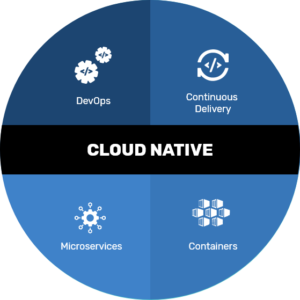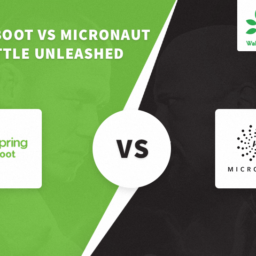In the modern era, a business needs to adopt the new application development and deployment approach to compete in this corporate world.
What is Cloud Native? Why is it important?
Cloud Native is a practice of creating and running apps that completely feat the power of cloud computing which enhances on-demand limitless computing power either on a private or public cloud. Applications that are built and deployed with cloud native methodology have some general features.
- Cloud Native apps (CNA) are composed of Micro Services – CNA takes advantage of micro-services architecture where each application is a collection of small services that can be run independently of each other. CNA services are often owned by individual teams, controlled by the team as per the schedules to deploy, develop, upgrade and scale up the services.
- Cloud Native Apps (CNA) are packaged in containers – These containers provide isolation contexts for microservices. They are easily portable, accessible and scalable from one environment to another. It is easy and fast to create or teardown making them ideal for building and running applications composed of microservices.
- Cloud Native Apps (CNA) on a continuous delivery model – Cloud Native apps run on a continuous delivery model. Software developers and IT operations teams to build, test, and release software updates as soon as they are ready without affecting end users or developers on other teams. Such a model encourages the adaption of a DevOps principle which fosters the collaboration between software developers and IT operations and creates a culture and practice where building, testing, and publishing software occurs quickly, frequently and constantly.

When successfully it can bring unprecedented speed, agility, and resilience into the app development and management process. It greatly increases developer productivity and simplifies operations. New application features and services can now be pushed to live applications for customer use whenever they are ready. With no need to worry about other teams work and zero impact on the end-user experiences. Also, Cloud Native applications can be automatically scaled quickly and massively or scaled down fast as needed. Meeting the exact customer demands while optimizing the usage of resources. these containerized cloud-native apps are also easily portable across the different environment for added agility and flexibility.
Furthermore, Cloud Native apps are built with greater resilience inside the application itself to better handle churn, quickly replacing failed components and recovering from unexpected events and failures, minimizing or even eliminating any service downtime.
A successful adaption of a cloud native approach enables organizations to bring innovations to market faster, accelerating the digital transformation of modern enterprises. Built upon our deep expertise in delivering and supporting world-class enterprise solutions WTT offers cloud native solutions addressing the most challenging issues to ease adaption. No matter where you are on a journey to being cloud native WTT has the solution to help you reap the benefits of this modern practice.

